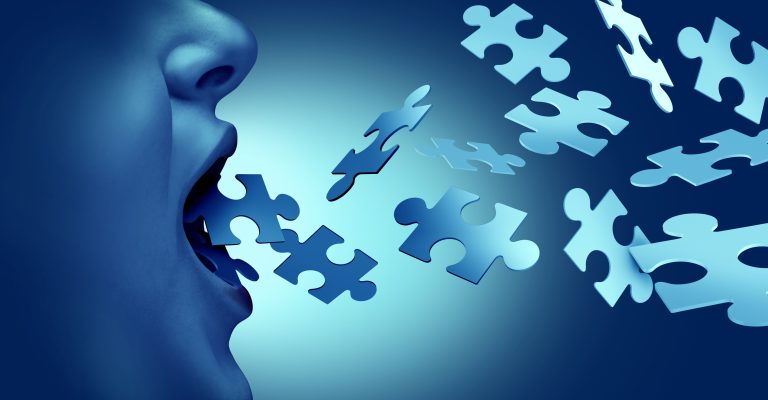
Aphasia is a condition that occurs when areas of the brain that are accountable for language are impaired as a result of trauma.
These regions are located on the left side of the brain in the majority of persons. It is more common for aphasia to arise unexpectedly, frequently in the aftermath of a stroke or a head injury; nevertheless, it is also possible for aphasia to develop gradually as the result of a brain tumor or a degenerative neurological condition.
The disease causes difficulties in reading and writing, as well as in expressing oneself verbally and comprehending what is read.
Aphasia is a condition that can develop in conjunction with other speech problems, such as dysarthria or apraxia of speech, which are also caused by damage to the brain.
Although the majority of persons who have aphasia are of middle age or older, anyone, even young children, is capable of developing the condition.
According to the National Aphasia Association, there are around one million persons in the United States who are now affected with aphasia, and nearly 180,000 Americans develop the condition each year.
Stroke is the most common culprit behind brain injuries. [Cause and effect] A stroke takes place when the blood supply is interrupted, either by a clot in the bloodstream or by a vessel that has burst or is leaking.
When brain cells are deprived of their regular flow of blood, which provides oxygen and other essential nutrients, these cells eventually perish.
A severe blow to the head, brain tumors, bullet wounds, brain infections, and degenerative neurological illnesses such as Alzheimer’s disease are some of the other causes of brain injury.

Before knowing the aphasia diagnoses, you need to know its forms. There are two primary forms of aphasia, namely fluent and nonfluent, both of which can be further subdivided into a number of subtypes.
Wernicke’s aphasia is a language disorder that causes a person to speak in long, complete sentences that make no sense, adding words that aren’t essential and even making up terms as they go.
As a consequence of this, it is frequently challenging to comprehend what the individual is attempting to convey in their speech. Wernicke’s aphasia patients frequently lack awareness of the grammatical errors they make when they speak. The inability to comprehend spoken language is yet another characteristic of this form of aphasia.
The form of nonfluent aphasia known as Broca’s aphasia is the most prevalent variety (see figure).
Those who suffer from Broca’s aphasia have sustained damage to the frontal lobe of the brain, which is the primary area affected.
Because the frontal lobe is particularly critical for motor movements, patients with this condition frequently suffer from right-sided weakness or paralysis of the arm and leg.
People who have Broca’s aphasia may hear what other people are sayingnbut they typically communicate in very brief phrases that are generated with a lot of effort. They frequently leave off insignificant terms like “is,” “and,” and “the.”
For instance, a person who has Broca’s aphasia might say, “Walk the dog,” which means “I will take the dog for walk,” “book two tables,” which means “There are two books on the table.”
Both of these phrases are correct. In most cases, those affected by Broca’s aphasia have a good grasp of the comprehension of the speech of others.
As a result of this, they are frequently aware of the challenges they face and are prone to become easily frustrated.
Damage to large sections of the language-processing regions of the brain can also lead to global aphasia, another form of language disorder.
People who suffer from global aphasia have significant difficulties communicating and may have highly restricted capacities in terms of their ability to speak or comprehend language.
There are several subtypes of aphasia, and each one is brought on by damage to a distinct brain region responsible for language.
Even though they comprehend what they are saying and are able to communicate effectively, some people may have difficulty paraphrasing sentences and words (conduction aphasia).
Some people have trouble naming things, despite the fact that they are aware of the thing in question and the possible applications for it (anomic aphasia).
When this kind of injury, known as a transient ischemic attack, it is possible that a person’s language abilities will return within a few hours or days.

The doctor who is treating the person for their brain damage is the one who will typically make the initial aphasia diagnoses.
The majority of patients will have either a MRI or computed tomography (CT) scan performed to determine whether or not they have sustained a brain injury and to pinpoint the exact location of the injury.
The doctor will examine the patient’s capacity to comprehend and generate language by having the patient perform tasks including following the aphasia diagnoses instructions, responding to questions, naming things, and having a conversation.
If the doctor has any reason to suspect that the patient has aphasia, they will typically refer the patient to a speech-language pathologist so that the patient can have a thorough evaluation of their capacity for communication.
The individual’s capacity to communicate verbally, convey ideas, carry on social conversations, comprehend written and spoken language, as well as read and write, is thoroughly evaluated.
The inability to repeat words or phrases is the primary symptom of conduction aphasia, which is a kind of the language disorder known as aphasia. The impairment in other aspects of language is less severe (or not at all). Associative aphasia is another name for this condition. The majority of the time, a person who has conduction aphasia is able to read, write, speak, and comprehend spoken information.
Conduction aphasia example: The individual suffering from conduction aphasia is aware of the mistakes they make and will make an effort to remedy them. For instance, if the patient is given the task of pronouncing the phrase “refrigerator,” they might respond by saying “frigilator… no, frerigilator” until they are able to utter the term in its proper form.